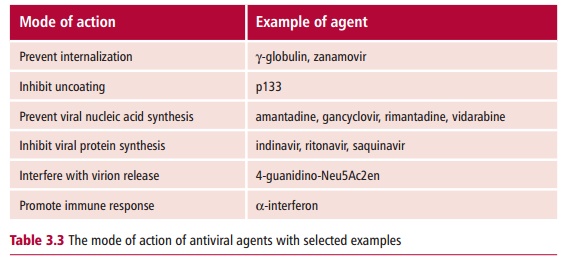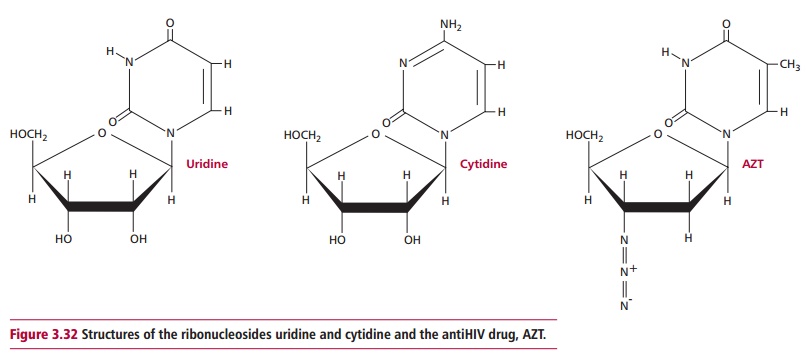Chapter: Biology of Disease: Infectious Diseases and Treatments
Antiviral Drugs - Treatment of Infectious Diseases
ANTIVIRAL DRUGS
Viruses are acellular and can only replicate by utilizing the metabolic processes of their host cell. It is difficult to target viruses inside host cells without damaging both infected and normal host cells hence there are relatively few effective antiviral agents. To be fully effective, antiviral drugs should ideally inhibit viral replication but not affect the reproduction of the host cell. Unfortunately, current antiviral drugs are not fully effective as all interfere to some extent with reproduction of the host cell and so produce adverse effects. Antiviral agents do not normally directly ‘kill’ the virus but, rather, inhibit their replication. Therefore, they must be administered for sufficient time to allow natural immune mechanisms to eradicate all the virions present. Thus antiviral therapy may well fail in severely immunocompromized patients.
Most antiviral agents act by disrupting one of the steps in the replication cycle of the target virus. They may prevent viral internalization into the host cell. If the virion enters its host cell, other antiviral agents can interfere with the release of the viral nucleic acid from the capsid. Some antiviral agents prevent the synthesis of the viral nucleic acid or its proteins. Even if the virus is successfully synthesized, agents that interfere with its release from the host cell can prevent its dissemination. Lastly, some antivirals can help promote a more effective immune response against viral infection. Table 3.3 lists examples of each type of antiviral agents.


Viruses can become resistant to specific antiviral agents. Hence a therapy combining several agents, each of which acts at a different stage in the replication cycle is likely to be a more effective treatment. For example, HIV treatment is typically a combination of the antiHIV proteases (Figure 3.31) amprenavir, ritonavir and the antiHIV reverse transcriptase inhibitor AZT, which is a ribonucleoside analog (Figure 3.32).

Related Topics